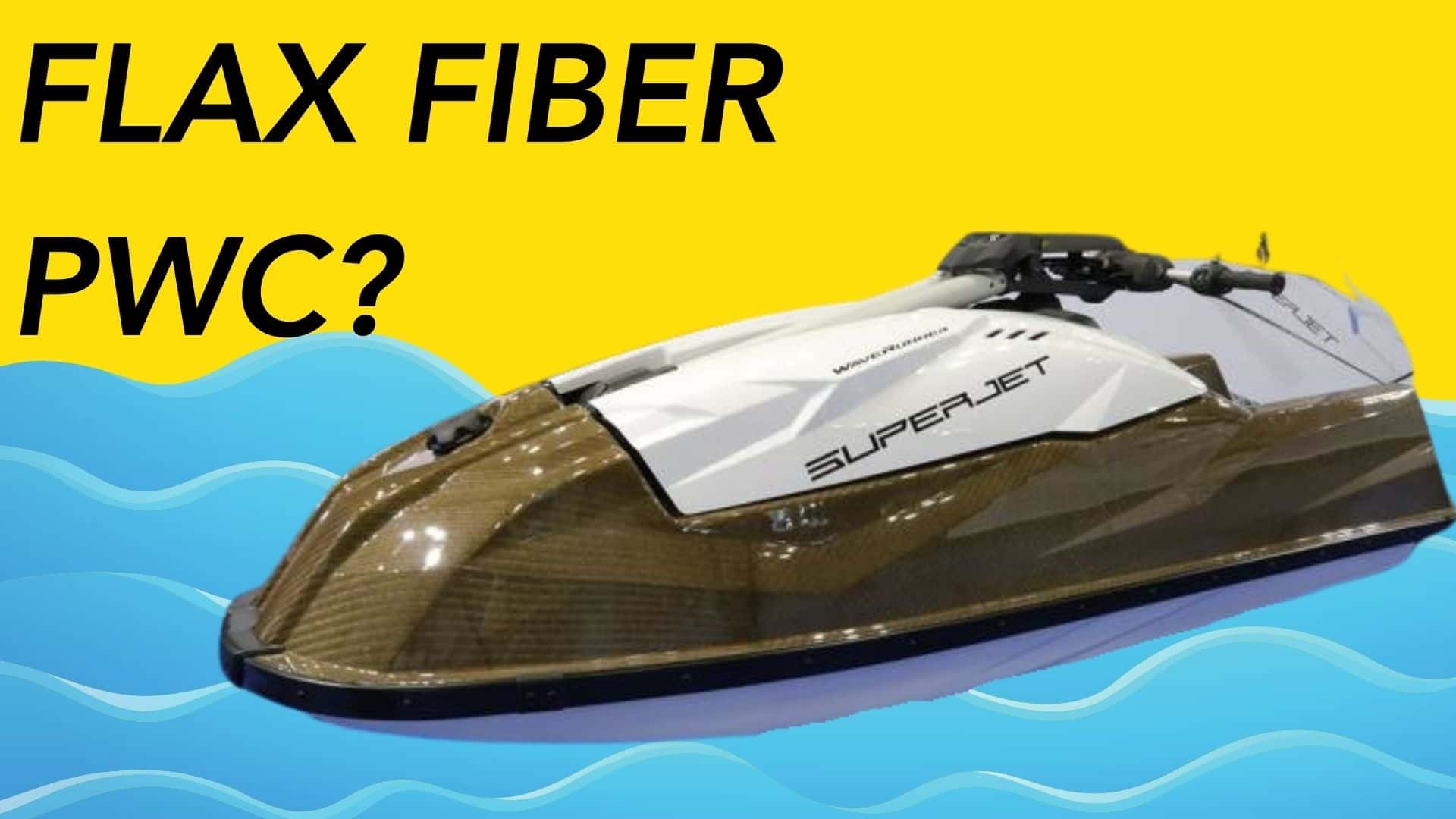
YAMAHA’S RESEARCHING FLAX FIBERS, DISPLAYED RAD PWC MADE OF THE STUFF
Yamaha hopes that flax fiber could eventually be a sustainable alternative to fiberglass and carbon fiber.
A couple of decades or so ago, the name of the game was lightweight—and companies didn’t really have to pay too much attention to things like sustainability and the environment. And so tons of cutting-edge composites entered the scene, boasting strength several times that of steel, all while weighing a fraction of the same.
As such, carbon fiber and other fancy composites are pretty much ubiquitous, from cutting-edge fighter jets to electric shaving razors. But as is the case with all industries, when it comes to materials science, attention is now shifting to sustainability and reduced environmental impact—particularly when it comes to recycling.
It’s a thing called circular economy, and it’s something we’ve talked about on multiple occasions in the past. From EV batteries to bicycle tires, the name of the game is coming up with more for less. Naturally, this means exploiting less natural resources and making use of what we already have.
It’s literally the textbook definition of recycling.
And so, powersports manufacturers have quite the interesting challenge ahead of them if they want to continue appeasing performance enthusiasts like you and me. How do you come up with a material that’s both lightweight and durable (like carbon fiber and fiberglass), but can easily be recycled and repurposed (very much unlike carbon fiber)?
Yamaha experimented on a SuperJet made out of flax fibers, and displayed it at the 2024 Japan International Boat Show.
Well, Yamaha seems to have found a viable solution, and it might come as a surprise to you.
Flax is a flowering plant that can mainly be found in European countries like France and Belgium. Its fibrous construction means that it’s commonly used for linen fabric, but as it would turn out, you could also use it in FRP, or fiber-reinforced polymers. Granted, there are quite a few challenges, particularly when it comes to preparing the raw materials for use in high-performance applications.
But Yamaha seems confident that it can actually be done. Tomoku Ito, a researcher at Yamaha, explained that natural fibers like flax tend to fray and absorb moisture much more easily than traditional glass fibers. Nevertheless, Yamaha has found a way to process the fibers to make them as effective as glass fibers when it comes to FRP applications.
The raw flax fibers are processed through an interesting technique called vacuum infusion, wherein resin is injected into a mold using vacuum pressure. The flax fibers are then used to strengthen and reinforce the material, making it resistant to bending, twisting, and impact forces.
The result is pretty dope, too. Heck, Yamaha even showcased a prototype SuperJet PWC at the 2024 Japan International Boat Show. This particular SuperJet had bodywork made out of flax-infused FRP, and needless to say, it looked pretty dope. It has a similar weave pattern as carbon fiber, except that the weave is much larger, and it has a natural brownish green hue, rather than the dark gray associated with traditional carbon fiber.
So, has Yamaha cracked the code, and will we soon see PWCs, ATVs, UTVs, and motorcycles made out of the stuff? Well, maybe.
You see, flax fibers have lots of advantages, chief of which being the fact that flax is a plant-based, renewable resource. This means that, apart from it being easy to obtain, it’s also easy to recycle when compared to carbon fiber. Additionally, it seems that flax fibers also provide the necessary strength and lightweight construction manufacturers need for high-performance applications, at least according to Yamaha’s research.
Flax fibers can apparently be used as a substitute for glass fibers in FRP.
But the fact remains that there are still a few hurdles left before we can really see mainstream adoption of flax fibers in FRP applications. For instance, they fray much more easily, making them more fragile, especially in their raw material state. This likely means that extra care has to be taken when processing the material and integrating it into the resin. This could result in extra costs, given the more complex manufacturing process involving flax fibers as of the moment.
But as is the case with all technological innovation, as more and more research is done on flax fibers, and more products are rolled out using flax-integrated FRP, chances are these costs will rapidly drop—the same way costs for EV batteries, carbon fiber, and pretty much any other fancy tech innovation have over the years.
And so, who knows—maybe flax fibers are indeed the future of lightweight, high-performance composites?
More Sustainable Initiatives
- Yamaha Goes Green, Uses Recycled Steel for Motorcycle Packaging
- Yamaha Wants Hydrogen Power, Will Use It to Power Manufacturing Facilities
Source: Yamaha
2024-09-18T14:05:08Z dg43tfdfdgfd